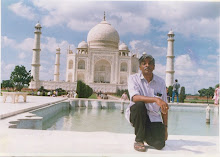As I have pointed out in my earlier post in September 14, 2008 that the main attraction to the 6th pay revision is the hike in HRA and Traveling Allowance (which is linked with DA). As a result of delayed implementation of the 6th pay revision both benefits are curtailed to the staff from January 2006 to December 2009. In this respect I would like to quote the words of 6th Pay Commission(page-15) "Partial implementation of these recommendations will destroy the underlying spirit, break the common thread and bring in several anomalies and inconsistencies. The report would, there fore, need to be treated in a holistic manner and the recommendations considered as a package".As far as central Government Employees are concerned they are getting the benefit of pension but that benefit is also not available to the employees of KSCSTE and hence the gravity of the loss is heavy in the case of KSCSTE employees. I hope Kerala Government will do something to protect the retired staff in their old age imbibed with ailments and loneliness.
I have put a link below which is very useful to calculate your pay and arrears. You can just click on 'calculate your pay and arrears' given below and give necessary details as required in the site and press 'Next' you will get the amount as fixed by Central Government. But you have to bear in mind that this calculation is in accordance with that of Central Government order and hence you have to deduct HRA and Traveling Allowance amount for the period September 2008 to December 2009 from the shown amount to get your approximate salary and arrears (alternately by selecting 'Staying in Quarters' and ' Availing Institute Transport' and pressing 'Next' you will get the approximate salary and arrears from January2006 to December2009 without HRA and Tr. Allowance. You have to add HRA and Tr. Allowance with effect from January 2010 onwards.) as per the Kerala State Council for Science, Technology and Environment order No. 3/2010/KSCSTE dated 08-01-2010.
You can fix your CSIR pay by multiplying old basic pay as on 01-01-2006(Basic pay in the old pay scale) by 1.86 and adding Grade Pay (GP). For PB 4 (except 14300-18300) this formula is not applicable(The factor used is nearly 2.42 )and it is tabulated as per the table provided by CSIR. Persons having Grade Pay of Rs 6600, 7600, 8700 and 8900 will also get two additional increments at the rate of 3%after their normal pay fixation and persons with Grade Pay of Rs 10,000 will get Special Pay of Rs 4000 per month. Professional update allowance for persons having Grade Pay of Rs 5400, 6600 and 7600 is Rs 10,000 per annum and for GP of Rs 8700 and 8900 is Rs 20,000 per annum and for GP of Rs 10,000 , Rs 12,000 and above is Rs 30,000 per annum.
This is the most unscientific pay revision giving no importance to seniority. Certain anomalies are also crept in the order and CSIR has already appointed an Anomaly Rectification Committee and I hope that they will rectify the anomaly.
The details i.e.,Grade,Old Pay Scale, Revised Pay Scale (Pay Band) and Grade Pay (GP) for different CSIR pay scales are given below (as per CSIR Annexture-1 of Letter No 5-1(3)/2008 darted 4th October 2008)
TA Grades
1>Old Scale 3050-75-4500>Revised Scale 5200-20200>GP 1900>PB 1
2>Old scale 4500-125-7000>Revised Scale 5200-20200>GP 2800>PB1
3>Old Scale 5500-175-9000>Revised Scale 9300-34800>GP 4200>PB2
4>Old Scale 6500-200-10500>Revised scale 9300-34800>GP 4600>PB2
(Placed in 7450-225-1150)
TO Grades
1>Old Scale 4500-125-7000>Revised Scale 9300-34800>GP 4200>PB2
(Placed in 5000-8000 with effect from 1.1.2006)
2>Old Scale 5500-175-9000>Revised Scale 9300-34800>GP 4200>PB2
3>Old Scale 6500-200-10500>Revised scale 9300-34800>GP 4600>PB2
(Placed in 7450-225-11500)
4>Old Scale 8000-275-13500>Revise Scale 15600-39100>GP5400>PB3
5>Old Scale 10000-325-15200>Revised Scale 15600-39100>GP6600>PB3
6>Old Scale 12000-375-16500>Revised Scale 15600-39100>GP 7600>PB3
7>Old scale 14300-400-18300>Revised Scale 37400-67000>GP8700>PB4
Scientist Grades
1>Old Scale 8000-275-13500> Revised Scale 15600-39100> GP 5400>PB 3
2>Old Scale 10000-325-15200>Revised Scale 15600-39100> GP 6600>PB3
3>Old Scale 12000-375-16500>Revised Scale 15600-39100>GP 7600>PB3
4>Old Scale 14300-400-18300>revised Scale 37400-67000>GP 8700>PB4
5>Old Scale 16400-450-20000>Revised Scale 37400-67000>GP8900>PB4
6>Old scale 18400-500-22400>Revised Scale 37400-67000>GP10000>PB4
7>Old Scale 22400-525-24500>Revised Scale37400-67000>GP 12000>PB4
calculate your pay and arrears
Persons joined after 01/01/2006 use this link
with best wishes
ktv
